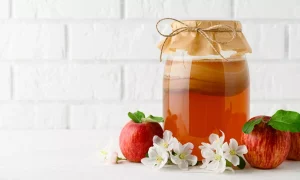Rare and Heirloom Plant Varieties for Home Gardeners

Ever bitten into a grocery store tomato and thought, “Where’s the flavor?” That’s the difference between mass-produced hybrids and rare, heirloom varieties. Home gardeners are rediscovering the joy—and frankly, the superior taste—of growing plants with history. Let’s dig into the world of uncommon seeds and why they’re worth your garden space.
Why Grow Rare and Heirloom Plants?
Heirlooms aren’t just your grandma’s green beans. These plants are time capsules—each with a story, adapted over generations for flavor, resilience, or sheer weirdness. Here’s why they’re having a moment:
- Flavor that punches above its weight: Heirloom tomatoes like ‘Brandywine’ or ‘Cherokee Purple’ taste like sunshine and soil, not watery cardboard.
- Biodiversity boost: Growing rare varieties helps preserve genetic diversity (and let’s face it, it’s cooler than growing the same zucchini as everyone else).
- Adaptability: Many heirlooms thrive in specific climates because, well, they’ve had decades (or centuries) to adjust.
Top Rare and Heirloom Plants to Try
1. Tomatoes That Actually Taste Like Tomatoes
‘Black Krim’: Smoky, salty-sweet, and almost metallic in its richness. This Russian heirloom turns nearly black in the sun.
‘Yellow Pear’: Tiny, teardrop-shaped tomatoes that burst with citrusy sweetness. Kids go nuts for these.
2. Forgotten Greens
‘Forellenschluss’ lettuce: An Austrian speckled trout lettuce with buttery leaves—yes, the name’s a mouthful, but so’s the texture.
‘Merveille des Quatre Saisons’: A French heirloom romaine so pretty you’ll hesitate to eat it (but do—it’s crisp and nutty).
3. Oddball Root Veggies
‘Dragon’ Carrots: Purple outside, orange inside, and packed with anthocyanins. Roast them whole, and watch guests do double-takes.
‘Chioggia’ Beets: Candy-striped pink and white rings when sliced. Mild enough for beet-haters to reconsider.
Where to Find These Hidden Gems
Big-box stores won’t cut it. Seek out:
- Seed swaps: Local gardening clubs often trade seeds like baseball cards.
- Specialty nurseries: Baker Creek Heirloom Seeds or Seed Savers Exchange are goldmines.
- Elderly neighbors: Seriously. That 80-year-old down the street? She’s probably got tomato seeds passed down from her mother.
The (Minor) Downsides—And How to Beat Them
Heirlooms aren’t always picture-perfect. Some crack in the rain; others attract pests. But here’s the fix:
| Issue | Solution |
| Lower disease resistance | Rotate crops yearly, use compost tea |
| Shorter shelf life | Preserve by canning, drying, or sharing |
| Unpredictable yields | Plant extras—it’s worth it |
Final Thought: Grow Something That Can’t Be Bought
In a world of identical grocery store produce, heirlooms are rebellion. They’re imperfect, unpredictable, and utterly alive. The first time you bite into a tomato that actually stains your shirt red? You’ll get it.





